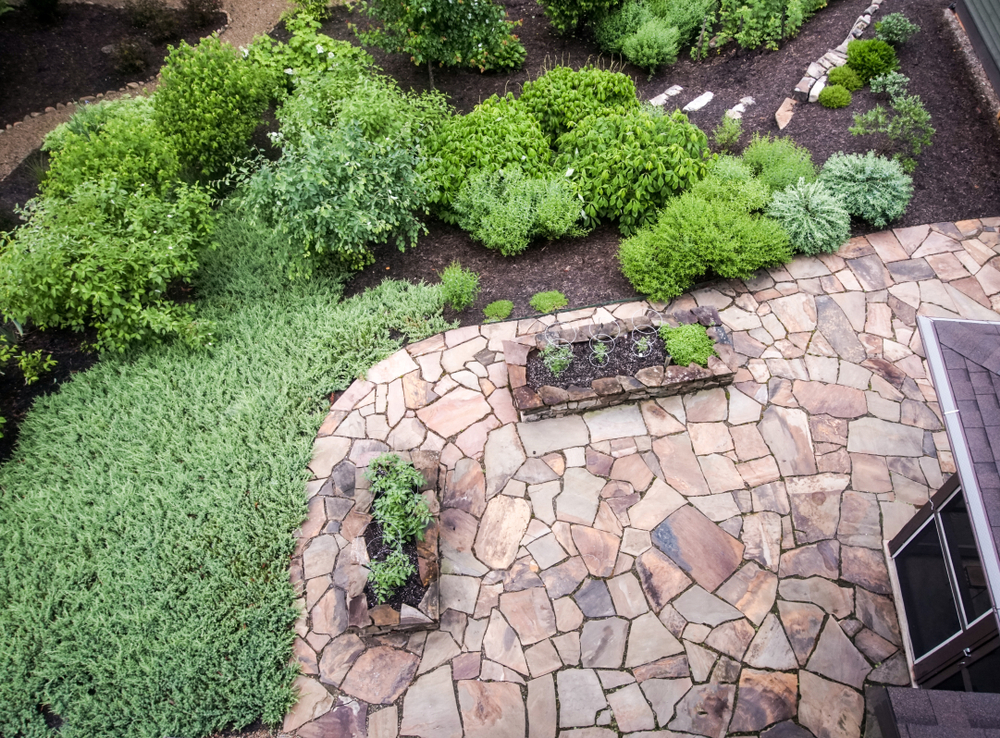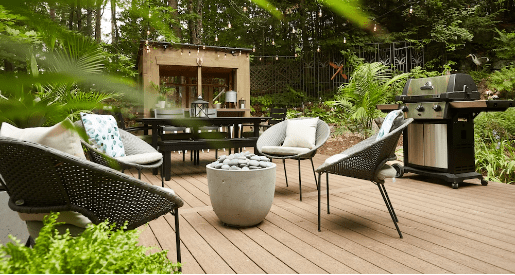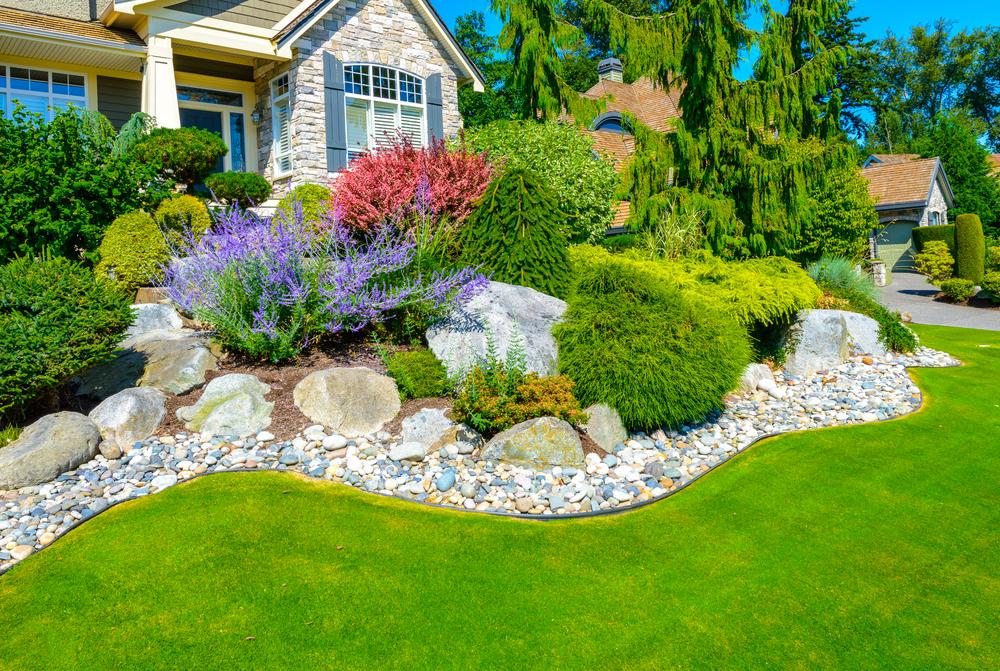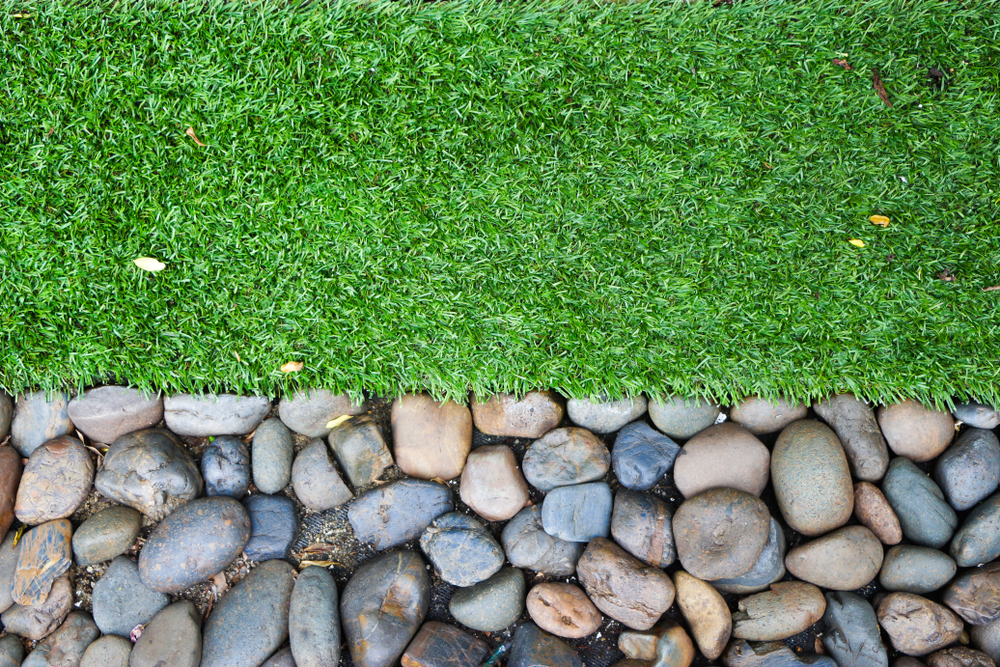Creating a sustainable oasis in your backyard is more than a trend; it’s a lifestyle choice that reverberates with the harmony of nature and modern living. “Sustainable Landscaping: Benefits of Using Local Rocks and Pavers” is not just a keyword but a philosophy that blends aesthetics, ecology, and practicality into a coherent whole. This article explores the multifaceted advantages of adopting sustainable landscaping practices, focusing on the use of local rocks, and pavers, and incorporating Las Vegas turf into your garden design.
In the arid landscapes of Henderson, Nevada, where the backdrop of the Las Vegas skyline paints a stark contrast to the serene, mountainous terrain, sustainability is not just an option but a necessity. The exclusive community of MacDonald Highlands serves as a beacon for those seeking to harmonize luxury living with environmental stewardship. Here, the use of local rocks and pavers is not merely a landscaping choice but a testament to the community’s commitment to sustainability and elegance.
Sustainable Landscaping with Local Rocks and Pavers
Local rocks, such as those found in the vast desert surrounding Las Vegas, offer an eco-friendly solution to landscaping needs. Incorporating landscape rocks into your garden not only mirrors the natural desert landscape but also reduces water usage, a crucial aspect in drought-prone areas. Similarly, the use of pavers in outdoor spaces creates permeable surfaces that aid in water management and prevent erosion, further emphasizing the commitment to sustainability.
The Role of Las Vegas Turf in Sustainable Landscaping
While rocks and pavers lay the foundation for a sustainable garden, the incorporation of Las Vegas turf introduces a lush, green element that requires minimal water and maintenance. This artificial turf, specifically designed to withstand the harsh desert climate, provides a year-round green aesthetic without the ecological footprint associated with traditional lawns.
Benefits of Decorative Rocks and Stone Pebbles
Decorative rocks and stone pebbles serve multiple purposes in sustainable landscaping. Beyond their visual appeal, they offer practical benefits such as weed suppression and soil moisture retention. These elements contribute to a garden’s overall health and sustainability, reducing the need for chemical herbicides and frequent watering.
Engaging with the Landscape: Rock Gardens and Stone Paths
Rock gardens and stone paths not only accentuate the natural beauty of the landscape but also encourage biodiversity by providing habitats for local flora and fauna. These features, when thoughtfully integrated, enhance the visual appeal of the garden while promoting a balance with the local ecosystem.
Incorporating Turf into Your Backyard: A Sustainable Choice
The integration of artificial turf into landscaping projects has gained momentum, especially in regions like Las Vegas, where water conservation is paramount. The benefits of turf extend beyond its low maintenance and water-saving advantages. Turf provides a safe, durable surface for outdoor activities, making it an ideal choice for families and pet owners. Moreover, its ability to mimic the look and feel of natural grass ensures that the aesthetic integrity of the landscape is maintained.
Maximizing Home Value with Sustainable Landscaping
Sustainable landscaping is not only beneficial for the environment but can also enhance the market value of a property. Strategies such as landscaping for property sellers leverage the appeal of well-designed outdoor spaces to attract potential buyers. By incorporating elements like local rocks, pavers, and artificial turf, sellers can showcase a home that is both luxurious and environmentally conscious.
A Game Changer for Pet Owners: Artificial Grass
For pet owners, the decision to install artificial grass can be a game-changer. Not only does it eliminate the need for constant lawn maintenance, but it also provides a safe, clean space for pets to play. The benefits of artificial grass in deserts extend beyond convenience, offering a practical solution to the challenges of maintaining a natural lawn in arid conditions.
The Elegance of Travertine in Sustainable Landscaping
Travertine, a form of limestone deposited by mineral springs, adds a touch of elegance to any landscaping project. Its natural, earth-toned colors and durable surface make it an excellent choice for outdoor areas. The use of travertine in patios, walkways, and other hardscaping elements not only enhances the visual appeal of the space but also contributes to a sustainable landscaping design by providing a durable and low-maintenance surface that blends seamlessly with the natural environment.
Sustainable Practices for Future Generations
The commitment to sustainable landscaping goes beyond the immediate aesthetic and practical benefits. It represents a forward-thinking approach that considers the long-term health of our planet. By choosing materials and practices that reduce water usage, minimize environmental impact, and support local ecosystems, homeowners can play a pivotal role in promoting sustainability for future generations.
The Benefits of Rock and Stone in Sustainable Design
The use of local rocks and stones in landscaping is a testament to the beauty and versatility of natural materials. These elements serve multiple functions, from creating serene rock gardens that invite contemplation and connect us with nature, to providing practical solutions for drainage and erosion control. Rock gardens and stone paths not only enhance the visual appeal of a landscape but also contribute to its ecological health by supporting native plant species and reducing water consumption.
Creating Spaces that Celebrate Nature
Sustainable landscaping is about more than just the materials used; it’s about creating spaces that celebrate and harmonize with the natural world. Incorporating elements like river rocks and boulders into garden designs can mirror the inherent beauty of the desert landscape, offering a sense of tranquility and connection to the earth. Similarly, the strategic use of pavers allows for the creation of walkways and patios that blend seamlessly with the surrounding environment, enhancing the outdoor living experience while being mindful of ecological balance.
Engagement and Community Building through Sustainable Landscaping
Adopting sustainable landscaping practices is also an opportunity for community engagement and building. By sharing knowledge and resources, communities can work together to promote sustainable living and create shared spaces that reflect a collective commitment to environmental stewardship. Engaging with local initiatives and participating in community gardening projects can foster a sense of belonging and shared purpose, uniting individuals in their efforts to create more sustainable and resilient environments.
Final Thoughts
The journey towards sustainable landscaping is an ongoing process of learning, experimentation, and adaptation. By embracing the principles of sustainability and incorporating local rocks, pavers, and artificial turf into our landscapes, we not only enhance the beauty and functionality of our outdoor spaces but also contribute to a larger movement toward environmental responsibility and conservation. As we continue to explore and implement sustainable practices, we pave the way for a future where our living spaces are in harmony with the natural world, offering inspiration and hope for generations to come.
For more insights into sustainable landscaping and to explore the range of options available for your next project, feel free to contact Parsons Rocks and embark on your journey to a greener, more sustainable outdoor space.





